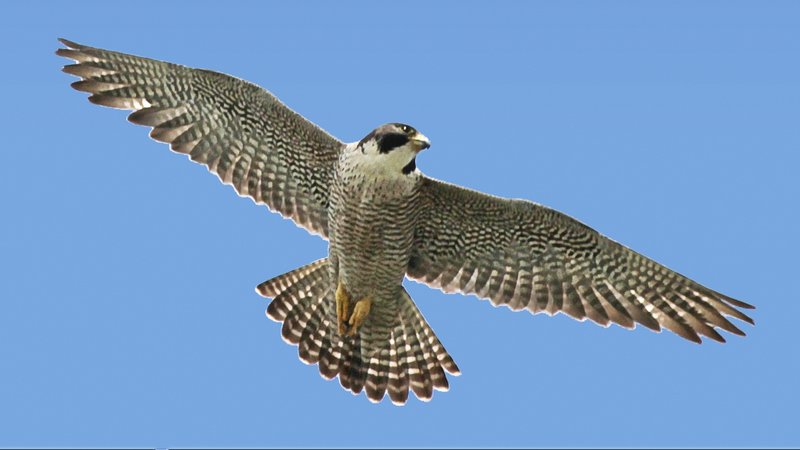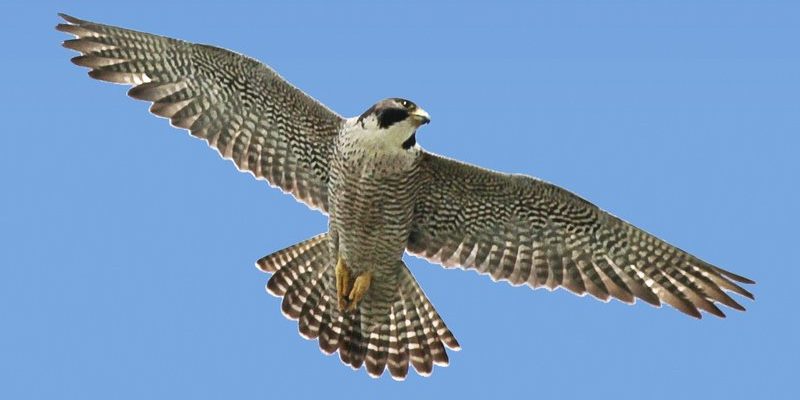
The peregrine falcon, known for being the fastest animal on the planet, is not just a marvel of nature; it’s also a symbol of strength, freedom, and resilience. Over centuries, it has inspired myths, legends, and traditions that reflect the values and beliefs of different societies. Let’s dive into the fascinating ways this bird has influenced local cultures and folklore, and explore just how its spirit continues to resonate today.
Peregrine Falcons in Native American Folklore
When we look at Native American cultures, the peregrine falcon often appears as a respected messenger between the heavens and earth. Many tribes, including the Lakota and the Hopi, view the falcon as a symbol of vision and clarity. They believe that the falcon can help guide humans in both times of decision and confusion, acting as a bridge to the spiritual world.
In storytelling, the peregrine falcon is sometimes depicted as a fierce protector, watching over the land and its people. For example, in some legends, the falcon’s speed is seen as a reflection of how quickly knowledge can come to those who seek it. This swift bird teaches us that wisdom can be attained if we’re attentive and open to the signs around us.
The falcon’s appearance in art and ceremony is also significant. Often, tribes create feathers and talismans representing this bird during rituals, emphasizing its connection to strength and courage. The ideas of flight and freedom associated with the peregrine falcon remind us to aspire for greatness and to overcome obstacles, be they physical or spiritual.
European Legends and Heraldry
Across the Atlantic, the peregrine falcon has a different but equally fascinating role in European culture. In medieval times, this bird was a favorite among nobility and became a symbol of status and chivalry. When you think about knights and royalty, you might picture them with their prized falcon perched on their arm, ready to hunt.
The use of the peregrine falcon in heraldry is particularly interesting. Many coats of arms feature the falcon, representing bravery and vigilance. It’s no wonder that this bird has become synonymous with strength and nobility. Additionally, folklore often portrays the falcon as a “noble spirit,” watching over its owners and providing guidance and protection from harm.
In stories, the peregrine falcon is sometimes the intricate muse behind tales of love, loss, and bravery. It often serves as a pivotal character in legends, bringing luck to those who respect and honor its wild nature. This intertwines the falcon further into the cultural identity of many European nations, making it a symbol that spans generations.
The Peregrine Falcon in Asian Cultures
In various Asian cultures, the peregrine falcon embodies different meanings. For example, in Japanese culture, the falcon is often associated with loyalty and determination. In literature and folklore, the bird sometimes represents the warrior spirit, symbolizing the values of honor and perseverance.
Falcons are depicted in traditional Japanese art, showcasing their elegance and fierce beauty. Animals, especially birds of prey, are commonly used in haiku and other poetry forms to evoke strong emotions and imagery. When you read a poem that paints a picture of a soaring peregrine falcon, it’s as if you can feel its strength and grace, capturing the essence of freedom.
In Chinese culture, falcons are sometimes seen as guardians. They symbolize not only power but also protection from misfortune. Illustrations of the peregrine falcon are often found in architecture and ornaments, showcasing the bird’s revered status. It’s believed that having symbols of the falcon nearby can bring good fortune and ward off negative energy.
Modern Symbolism and Conservation Efforts
Fast forward to today, and the peregrine falcon is still a strong symbol, especially in conservation movements. Once threatened by pesticides and habitat loss, these birds have made a remarkable comeback, thanks to dedicated conservation efforts and awareness campaigns.
In many communities, the peregrine falcon is now celebrated as a symbol of resilience and recovery. Schools and environmental groups use its story to teach about the importance of wildlife protection and ecosystem balance. Kids often participate in projects like building nesting boxes and learning about the intricate details of avian life cycles.
This renewed appreciation for the peregrine falcon serves as a reminder that we can learn from nature’s perseverance. It’s not just a bird; it represents hope, change, and the vital role that humans can play in preserving the natural world. Through education and action, we honor the falcon’s place in our environment and culture.
Regional Festivals and Celebrations
Various regions have embraced the peregrine falcon in their festivals and celebrations, showcasing the bird’s cultural significance. One notable example is the Peregrine Falcon Festival in the United States, where enthusiasts gather to celebrate the bird’s beauty and ecological importance.
During such events, people engage in activities like bird watching, educational workshops, and falconry demonstrations. Families and individuals deepen their understanding of these incredible birds while celebrating the rich folklore surrounding them. The festival serves as a platform to highlight conservation efforts and promote awareness about the challenges these birds still face.
In other parts of the world, local gatherings celebrate the migration of peregrine falcons. Communities come together to share stories, folklore, and even local cuisine, all while honoring the powerful presence of the falcon. These gatherings reflect a deep-rooted connection not only to the bird itself but to the shared cultural heritage of the community.
The Role of the Peregrine Falcon in Artistic Expression
Art has always been a significant way to express admiration for nature, and the peregrine falcon is no exception. Many artists, from painters to sculptors, have drawn inspiration from this magnificent bird, capturing its essence in various forms.
In traditional art, you might find the falcon depicted with rich colors and intricate details, symbolizing speed and elegance. Modern artists also continue this trend, experimenting with different mediums to express their connection to the bird. Street art, for example, might portray the falcon in bold, graphic styles that resonate with today’s audiences.
Additionally, literature is filled with references to the peregrine falcon, highlighting its symbolic role in stories of adventure, courage, and discovery. You might come across poems that describe the falcon’s flight in metaphorical terms, representing freedom or personal growth.
This artistic expression reinforces the idea that the peregrine falcon is more than just a bird—it’s a muse that inspires creativity and reflection. By celebrating it in art and literature, cultures worldwide pay tribute to its spirit and significance in human history.
The peregrine falcon serves as more than just an impressive raptor; it embodies a rich narrative woven through local cultures and folklore. From its role in Native American stories to its symbolism in heraldry, and its inspiring comeback in conservation, the falcon continues to capture our hearts and minds.
As we explore these cultural connections, it’s clear that the peregrine falcon symbolizes much more than strength and speed; it represents our dreams, values, and the enduring relationship between humans and nature. So the next time you see one of these magnificent birds, take a moment to appreciate not just its beauty but also the stories it carries with it—stories that resonate across time and geography, reminding us of the importance of all creatures in our world.

